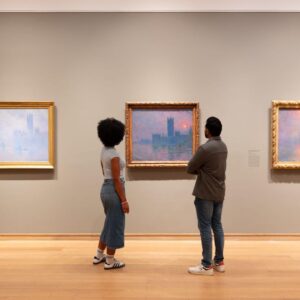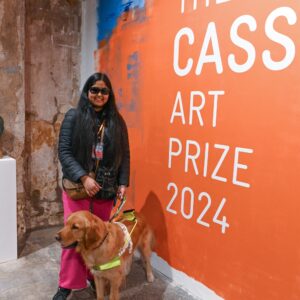
Bright idea … Vincent van Gogh’s The Yellow House (1888). Click to enlarge. Photograph: Van Gogh Museum
Vincent van Gogh has a good claim to be the greatest colourist ever. His yellows, his blues, his cherry trees and sunflowers and skies all created through thickly impastoed smears of chromatic splendour have made the very name Van Gogh synonymous with intense expressive colour.
Yet some of the colours we see in Van Gogh’s paintings are just pale echoes of the hues he originally set down in the 1880s. This startling discovery has just been revealed by the Van Gogh Museum in Amsterdam. A research project undertaken by the museum reveals that a number of Van Gogh’s favourite paints have faded badly and changed the appearance of his works, making them milder, more empty, less exquisite in their use of complementary colours than they were when he painted them.
The evidence is presented in Van Gogh at Work, a new exhibition at this popular and intellectually rigorous museum examining his practice as a painter, and looking at everything from the kinds of canvas he used – Van Gogh painted on everything from raw jute to, when he was short of cash, a dishcloth – to his intimate exchanges of ideas with friends such as Gauguin and Toulouse-Lautrec.
The friendship with Toulouse-Lautrec is a touching example of how a physical examination of art can lead us closer to the artist. Van Gogh knew the great painter of Montmartre nightlife when they both lived in Paris, but evidence presented here, including the fact that they bought their canvases at the same shop, shows them working closely as colleagues.
Another intimate revelation about Van Gogh’s working habits is that he regularly reused his canvases, painting over early works. A flower painting in the show has a painting of wrestlers by Van Gogh concealed under it. When he wanted to keep a painting, he sometimes painted on the back: two brown studies for his early work The Potato Eaters have later, vibrant self-portraits on their reverse.
Amid all this insight, the fact that Van Gogh’s colours are not always in their pristine glory is hard to assimilate. The evidence is relentless. This exhibition is in effect a public report on a massive research project using the latest, non-invasive techniques to study the microscopic structure of art. You can even look through an electronic microscope for yourself in an interactive that lets you see the grains of dirt in Van Gogh’s rich strokes of oily colour.
In the end, the fact that some of Van Gogh’s colours have changed over the years is simply a homage to his genius. No one, after all, has any complaint about his colours. In this exhibition, I stood enraptured by the deep blue sky and golden street in his 1888 painting The Yellow House.
It doesn’t matter, for most of us, if there are changes in his colours. His visionary art is such that it can evolve and still be true to itself. The fresh insights in this brilliant exhibition, which includes a loan of Van Gogh’s Sunflowers, no less, from London’s National Gallery, do not undermine the artist’s greatness. They just bring us closer to him, as we stand at his shoulder, watching him work – until we are really close, in a fresh, invigorating way, to his material life as an artist. It even includes his palette, smeared with colours, and three tubes of paint that belonged to him. They are exhibited next to his self-portrait.
His eyes in the portrait are formidable – they will never fade.
guardian.co.uk © Guardian News & Media Limited 2010
Published via the Guardian News Feed plugin for WordPress.







